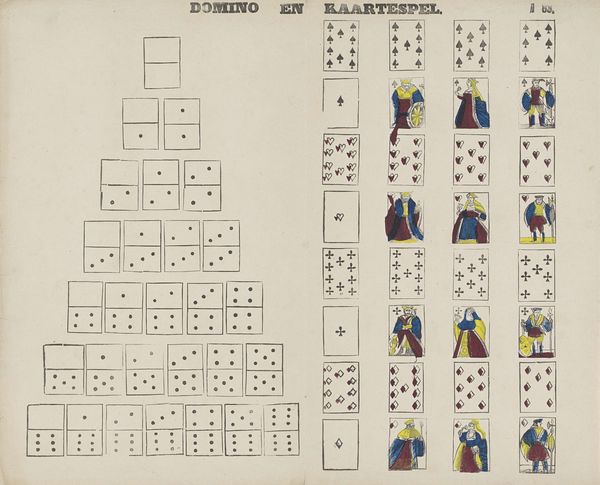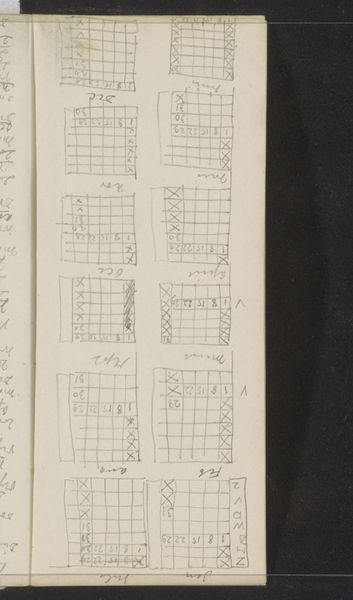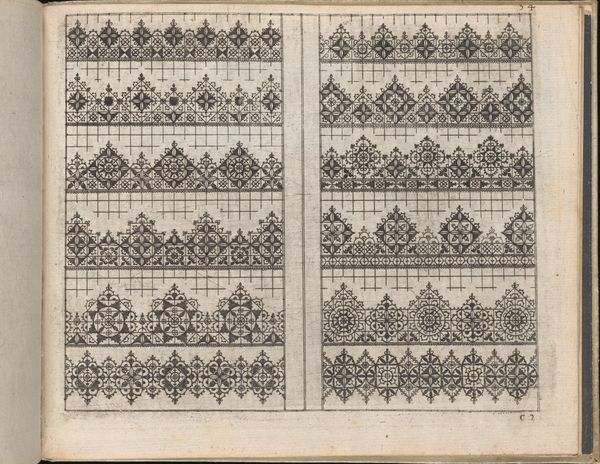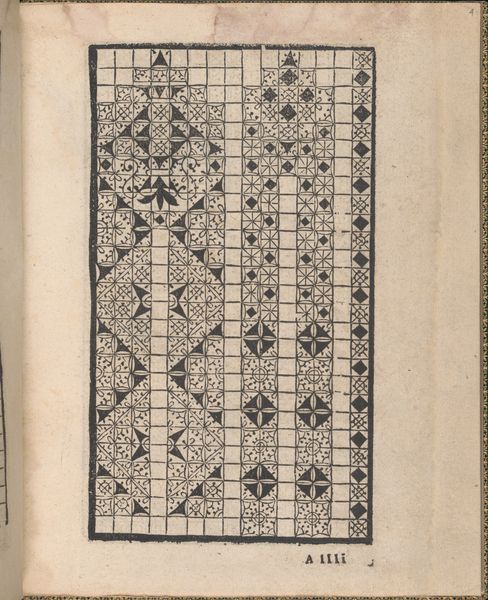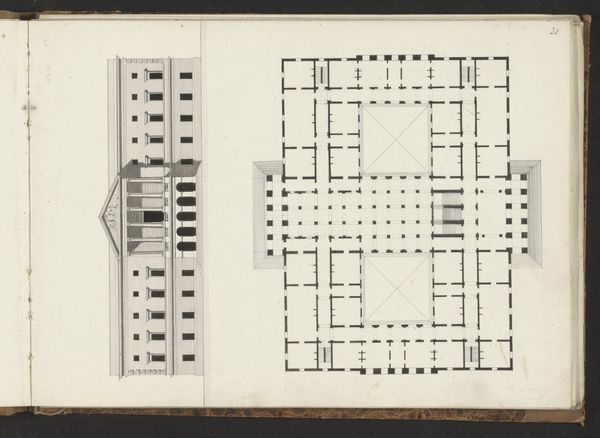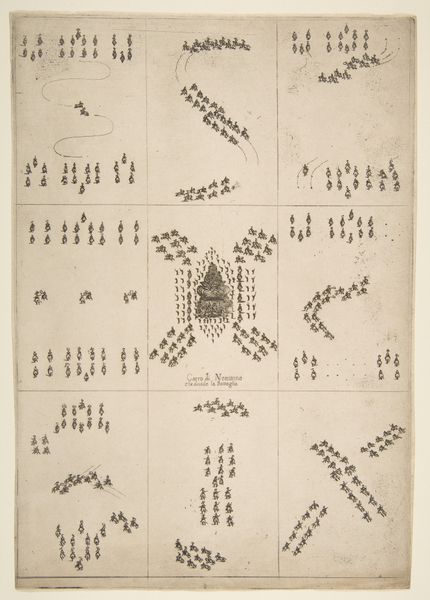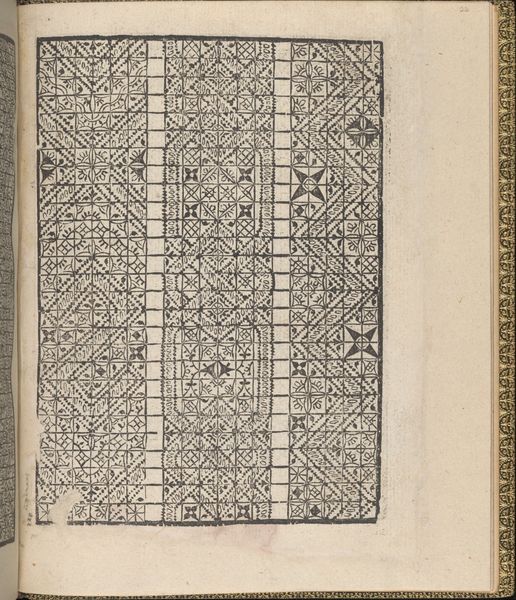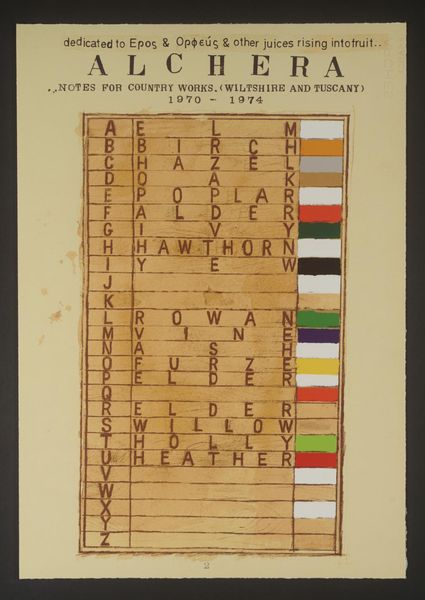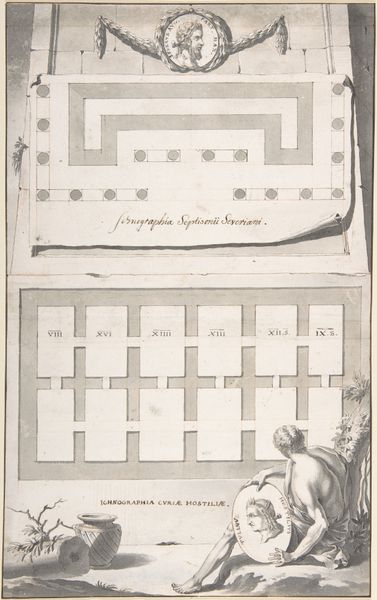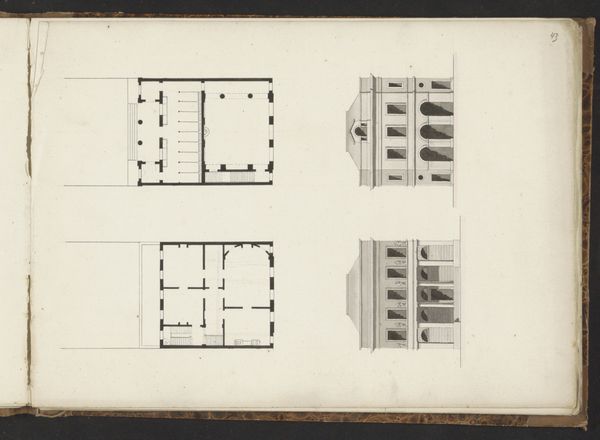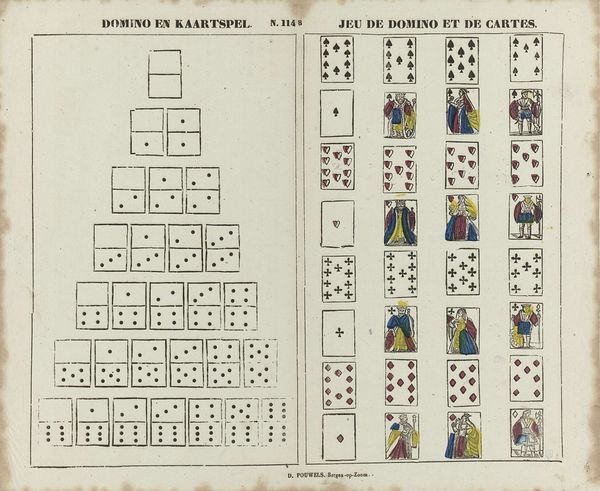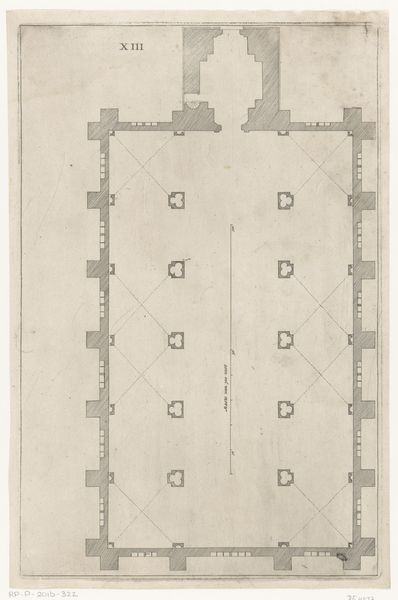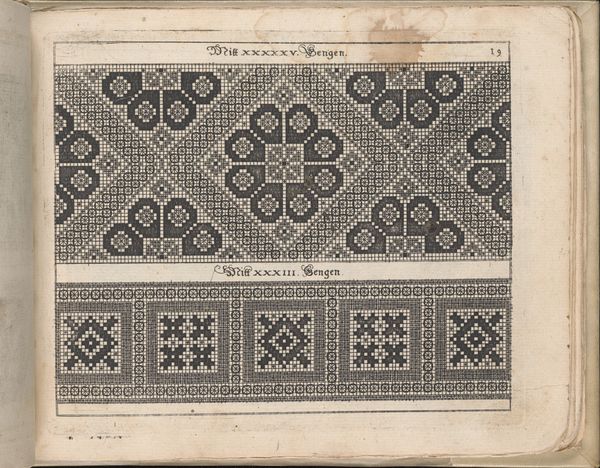
drawing, print, paper, ink
#
drawing
#
aged paper
#
toned paper
# print
#
old engraving style
#
hand drawn type
#
paper
#
personal sketchbook
#
ink
#
pen-ink sketch
#
ink colored
#
pen work
#
sketchbook drawing
#
genre-painting
#
sketchbook art
Dimensions: height 325 mm, width 394 mm
Copyright: Rijks Museum: Open Domain
Curator: This fascinating drawing, dating roughly from 1842 to 1866, is titled "Domino en kaartspel," or "Dominoes and Card Game." It's currently held in the Rijksmuseum. Editor: My first thought? Nostalgia. It reminds me of old board games in my grandparents’ attic – that sort of forgotten, intimate amusement. Curator: It’s rendered in ink on paper, using both drawing and printing techniques, quite a mixed media approach for its time. I'm intrigued by the way it conflates artisanal skill with mechanical reproduction. Were these individual drawings meant as models for printed sheets or perhaps as a more personal design draft for a playful item sold by someone like the widow C. Kok-van Kolm, who is listed with the work's information? Editor: Definitely prompts us to consider the democratization of leisure. Playing cards and dominoes were increasingly available, and their visual design, like this sheet, becomes a signifier of class, taste, and accessible amusement. And don't forget the social aspect, perhaps this drawing hints at gathering in groups that likely excluded marginalized people like women. Curator: The details also spark interest. Notice the imperfections, like the ink blots and the handmade quality of the lines. They point to the human labor behind even seemingly standardized forms. Consider also the economics around the widow that it mentions, and think about how this object played into their finances and income in comparison to others around them. Editor: Agreed! The artist's labor in depicting the royals for playing cards, too – a kind of engagement with systems of power on a small scale. And each tiny ink blot is potentially evidence for social tensions around that individual’s labor and the expectations, gendered or otherwise, placed on their work output. Curator: It also provides a curious window into 19th-century forms of visual communication. We often think of fine art being presented on canvases, displayed for viewing only by select social strata, yet items like this reached the hands of common people for hours on end! Editor: Precisely! By embracing this drawing, the Rijksmuseum recognizes and elevates forms of design. It's fascinating how this work makes us question and reconsider those assumed social boundaries and barriers. Curator: Looking at "Domino en kaartspel" really prompts one to reevaluate traditional hierarchies of craft and so-called 'high' art, and see a whole array of commercial artistic processes meeting in tandem. Editor: It definitely demonstrates how the art world expands by situating this drawing in a rich history. We start to better understand the complex social dynamics surrounding seemingly simple pleasures.
Comments
No comments
Be the first to comment and join the conversation on the ultimate creative platform.

